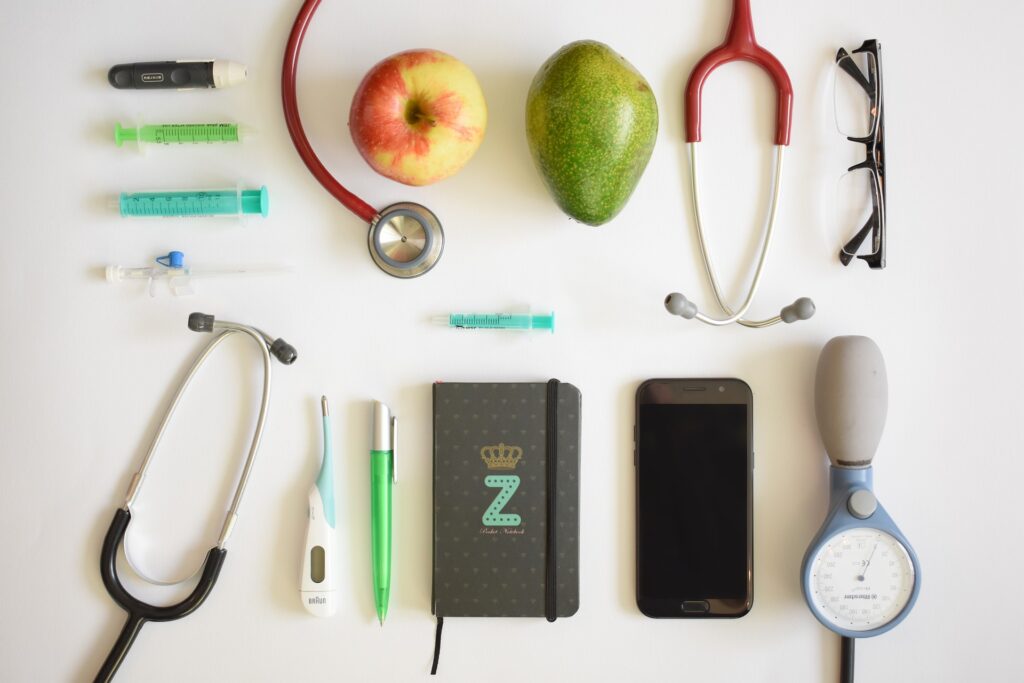Hypertensive Emergency Treatment ;
Important Points :
Drug Of Choice in Hypertensive Emergency with –
- Diabetes Mellitus (DM): Nicardipine or Clevidipine
- Asthma: Nitroglycerin (NTG)
- Chronic Kidney Disease (CKD): Fenoldopam
- Thyroid Disorders: Labetalol or Esmolol
- Chronic Obstructive Pulmonary Disease (COPD): Hydralazine
- Rheumatoid Arthritis: Sodium Nitroprusside
- Systemic Lupus Erythematosus (SLE): Clevidipine
- Coronary Artery Disease (CAD): Nicardipine
- Chronic Liver Disease: Esmolol
- Human Immunodeficiency Virus (HIV)/Acquired Immunodeficiency Syndrome (AIDS): Clevidipine

- Important Points :
- Hypertensive Emergency – Overview:
- What is Hypertensive Emergency?
- Target Organ Damage in Hypertensive Emergencies:
- Identifying Patients in Need:
- Drug Selection and Administration:
- Drug Selection for Hypertensive Emergencies in Systemic Diseases:
Hypertensive Emergency – Overview:
Hypertensive emergencies require prompt and effective treatment to prevent serious complications and improve clinical outcomes. This article provides an overview of the treatment strategies for hypertensive emergencies, including the drugs of choice and target blood pressure goals for different clinical scenarios.
What is Hypertensive Emergency?
Hypertensive emergencies are characterized by severely elevated blood pressure (systolic blood pressure >180 mmHg or diastolic blood pressure >120 mmHg) accompanied by acute target organ damage. Urgent intervention is necessary to lower blood pressure safely and protect vital organs.
Target Organ Damage in Hypertensive Emergencies:
Hypertensive emergencies are characterized by severely elevated blood pressure levels that can lead to acute damage in various organs. Here’s a list of target organ damage commonly associated with hypertensive emergencies:
1. Cardiovascular System:
- Acute myocardial infarction
- Unstable angina pectoris
- Acute heart failure
2. Central Nervous System:
- Acute intracranial hemorrhage
- Acute ischemic stroke
- Hypertensive encephalopathy
3. Renal System:
- Acute renal failure
4. Pulmonary System:
- Acute pulmonary edema
5. Vascular System:
- Acute aortic dissection
6. Pregnancy-related Conditions:
- Eclampsia or pre-eclampsia
7. Postoperative State:
- Postoperative surgical hypertension
8. Adrenergic Crisis:
- Hypertensive crisis from hyperadrenergic states, such as pheochromocytoma crisis or sympathomimetic hypertensive crisis caused by substance use or abrupt cessation of sympatholytic drugs.
Identifying Patients in Need:
Patients presenting with hypertensive emergencies may exhibit various acute conditions, including acute aortic dissection, acute pulmonary edema, acute myocardial infarction, unstable angina pectoris, acute renal failure, and acute intracranial hemorrhage, among others. Effective treatment depends on accurately identifying the underlying condition and its associated complications.
Drug Selection and Administration:
1. Acute Aortic Dissection:
Intravenous esmolol is the drug of choice, administered initially as a loading dose (500–1,000 mcg/kg/min over 1 min) followed by a maintenance infusion (50 mcg/kg/min) to rapidly reduce blood pressure.
Dose calculation of Esmolol:
Each vial of 10 ml solution for injection contains 100 mg esmolol H.
So, 1 ml aqueous solution contains 10 mg esmolol h. (10 mg/ml)
eg. If a 70 kg adult male with hypertensive Emergency will require 70 mg/min ( 7 ml from vial) of injection emsolol over 1 minute IV.
2. Acute Pulmonary Edema:
Intravenous nitroglycerin, clevidipine, or nitroprusside are preferred, with beta blockers contraindicated. The initial infusion rate of intravenous nitroglycerin is 5 mcg/min, with a maximum infusion rate of 20 mcg/min.
3. Acute Myocardial Infarction or Unstable Angina Pectoris:
Intravenous esmolol is recommended, with nitroglycerin as an adjunct if necessary. Caution should be exercised to avoid lowering diastolic blood pressure to less than 60 mmHg.
4. Acute Renal Failure:
Clevidipine, fenoldopam, or nicardipine are the drugs of choice for blood pressure control. The initial infusion rate of intravenous fenoldopam is 0.1 to 0.3 mcg/kg/min, with a maximum infusion rate of 1.6 mcg/kg/min.
5. Eclampsia or Pre-eclampsia:
Hydralazine, labetalol, or nicardipine are preferred, with specific drugs like angiotensin-converting enzyme inhibitors contraindicated. The maximum initial dose of intravenous hydralazine is 20 mg, with repeat doses every 4–6 h if needed.
6. Postoperative Surgical Hypertension:
Clevidipine, esmolol, nitroglycerin, or nicardipine may be used. A systematic review suggests clevidipine as the drug of choice for acute postoperative hypertension.
7. Hypertensive Crisis from Hyperadrenergic States:
Intravenous clevidipine, nicardipine, or phentolamine are recommended. The initial dose of phentolamine is an intravenous bolus dose of 5 mg, with additional bolus doses of 5 mg administered every 10 min as needed.
8. High Plasma Renin State:
Intravenous enalaprilat may be considered for blood pressure control. The initial dose of enaliprilat administered intravenously is 1.25 mg over 5 min.
Drug Selection for Hypertensive Emergencies in Systemic Diseases:
When managing hypertensive emergencies in patients with systemic diseases such as asthma, diabetes, and others, it’s crucial to consider potential drug interactions and contraindications. Here’s a tailored approach to drug selection for hypertensive emergencies in these conditions:
1. Asthma:
- Avoid beta-blockers: Beta-blockers may exacerbate bronchospasm in patients with asthma. Instead, consider alternative agents such as calcium channel blockers or vasodilators.
- Drug of choice: Intravenous calcium channel blockers like clevidipine or nicardipine may be preferred due to their bronchodilatory effects and ability to lower blood pressure rapidly.
2.Diabetes:
- Avoid agents that may worsen glycemic control: Beta-blockers, especially non-selective ones, can mask hypoglycemic symptoms and impair glucose metabolism. Preferential selection of agents with neutral or favorable effects on glucose metabolism is important.
- Drug of choice: Intravenous agents like clevidipine or nicardipine are suitable options, as they have minimal impact on glucose metabolism.
3.Chronic Kidney Disease (CKD):
- Considerations: Patients with CKD are at increased risk of fluid overload and electrolyte imbalances. Choose agents that do not exacerbate these risks.
- Drug of choice: Nicardipine or fenoldopam may be preferred due to their favorable renal profiles and ability to lower blood pressure effectively.
4. Chronic Obstructive Pulmonary Disease (COPD):
- Avoid agents that may worsen respiratory function: Beta-blockers should be used cautiously in patients with COPD due to their potential to induce bronchoconstriction.
- Drug of choice: Intravenous calcium channel blockers like clevidipine or nicardipine are suitable options, as they have minimal impact on pulmonary function.
5. Coronary Artery Disease (CAD):
- Considerations: Patients with CAD may benefit from agents that provide additional cardiovascular protection.
- Drug of choice: Intravenous esmolol may be preferred in patients with CAD, as it offers beta-blockade along with blood pressure reduction.
6. Stroke:
- Considerations: Patients with a history of stroke require careful blood pressure management to prevent recurrent events.
- Drug of choice: Nicardipine or labetalol may be preferred options for blood pressure control in patients with a history of stroke.
Clinical Evidence and Research Needs:
While several drugs are effective in treating hypertensive emergencies, there is a need for more randomized clinical trials to determine optimal treatment strategies and their impact on mortality and morbidity outcomes. Additionally, guidelines for specific conditions like acute ischemic stroke require further refinement based on emerging evidence.
In conclusion, timely recognition and appropriate management of hypertensive emergencies are critical for preventing organ damage and improving patient outcomes. Continued research and evidence-based practice are essential for refining treatment guidelines and optimizing patient care.


Pingback: Blood pressure - Normal and Hypertension - Modern Health
Pingback: Marfan Syndrome : Cause And Treatment - Modern Health
Pingback: Home - ECG Oxford
Pingback: Home - Common health conditions - ECG Oxford